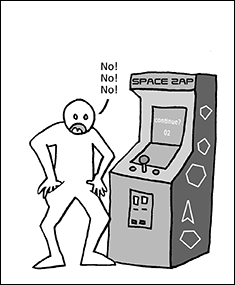Level 15
Everybody Wins: Monetization
“The main thing about money, Bud, is that it makes you do things you don't want to do.”
—That guy in the movie “Wall Street” who wasn’t Gordon Gecko
SINCE THE RELEASE of the first edition of Level Up! one design system has become increasingly important to the gaming industry: monetization. What is monetization? It’s a series of strategies employed by the developer to try to get players to pay additional money past the player’s initial purchase.

Game developers have always been happy to separate the player from their money. It’s been with us since the dawn of gaming: if you wanted to keep playing, you kept paying (until you got so good at playing you could make a quarter last for hours if not days!1). Today is no different. Take a look at some of the traditional ways developers could earn a little more cash:
- Pay-to-play: Early arcade players fed quarters for additional lives. While pay-to-play faded during the early years of consoles and the decline of arcades, it came back in vogue when players could make financial transactions online. Starting with games on PCs, pay-to-play became increasingly popular with the rise in social gaming, where players could keep playing as long as they had paid for the energy to do so.
- In-game advertising: Starting with Pepsi and Canon billboards in Pole Position (Namco, 1982), developers have been happy to ...
Get Level Up! The Guide to Great Video Game Design, 2nd Edition now with the O’Reilly learning platform.
O’Reilly members experience books, live events, courses curated by job role, and more from O’Reilly and nearly 200 top publishers.

